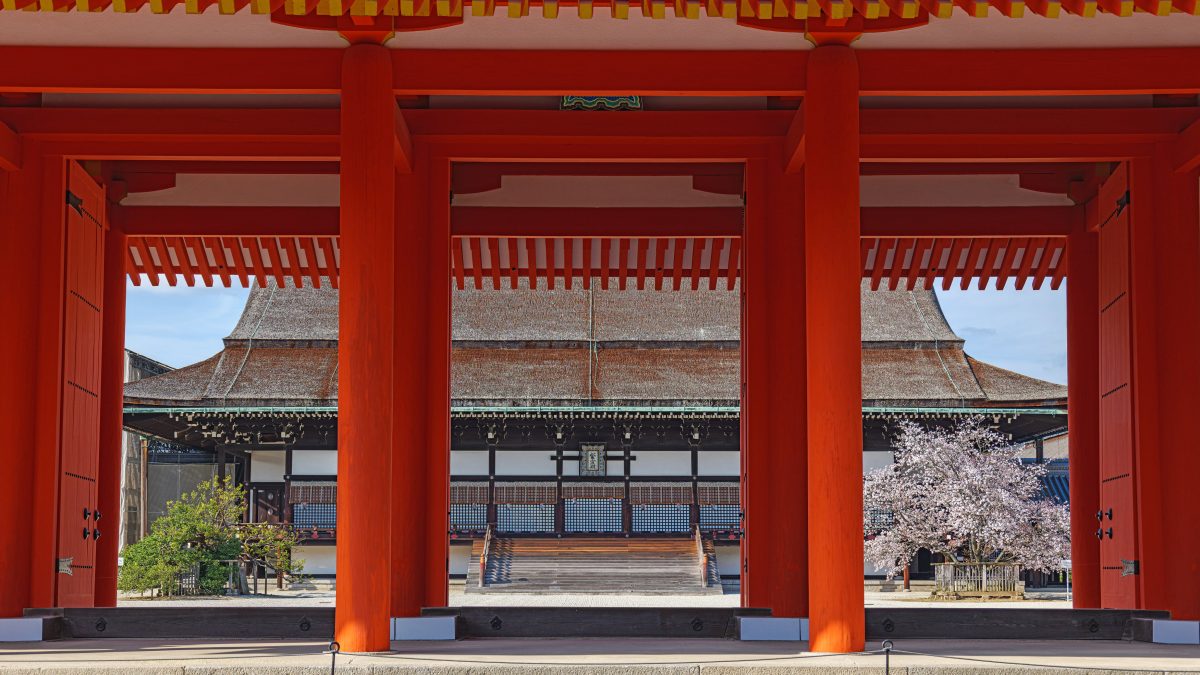Nestled within the expansive Kyoto Gyoen, a mere stroll from the Imadegawa subway station, lies the illustrious Kyoto Imperial Palace. For over 500 years, spanning the mid-14th century to 1869, this regal complex served as the emperor’s residence, retaining its majestic ambiance and elegant architecture.
Good news for travelers! Since Fall 2016, the palace has embraced year-round open access. Visitors can freely tour its vast grounds, admiring breathtaking structures such as the Shishinden, Ogakumonjo, and Kogosho without prior reservation. And, what’s better, entry is complimentary. A simple baggage check at Seishomon, the palace’s northeast entrance in Kyoto Gyoen, will grant you this timeless experience. While wandering, be aware that certain routes are designated for public viewing.
Special Autumn Exhibition 2023: “Introduction to Kyoto Imperial Palace’s Court Culture”
Mark your calendar for a unique opportunity between November 22nd and 26th, with the palace offering a special glimpse into its rich heritage. Please note that regular viewing will be halted on November 20th, 21st, 27th, and 28th. Admission is free, and visitors can enter between 9:00 AM to 3:20 PM, with the final exit by 4:00 PM. Highlights of this exhibition will be announced in mid-October.
Immerse yourself in traditional performances:
- November 22: Gagaku Kangen at 10:00 AM and 11:00 AM
- November 23: Elegant Gagaku at 1:30 PM and 2:30 PM
- November 24: Gagaku at 10:00 AM and 11:00 AM
- November 25: Kangen at 10:00 AM and 11:00 AM
- November 26: Kemari (ancient football) at 10:00 AM and 11:00 AM
To ensure everyone’s safety, entry restrictions may be in place to avoid overcrowding. Bag checks will be carried out upon entrance. Note: There won’t be any guided tours in Japanese or other languages during this period.
Thinking of dropping by on a Monday? Ensure you’ve checked the Imperial Household Agency’s website for any closures, usually excluding holidays. Occasional events or VIP visits might also affect accessibility.
Although the palace typically offers staff-led tours free of charge, these are momentarily halted due to COVID-19 precautions. However, for a more in-depth and personalized experience, consider requesting a guide from local volunteer organizations like us, VisitKansai. Our passionate guides can offer you insights and tales that will make your palace visit truly unforgettable.
Intrigued? If you’re eager to dive deeper into the stories and secrets of the Kyoto Imperial Palace, don’t wait! Request a guide now and let our local guides bring history to life right before your eyes.
Regardless, the palace remains a testament to Japan’s rich history, a must-visit on your Kyoto itinerary.
| Name | Kyoto Imperial Parace |
| Address | 3 Kyoto Gyoen, Kamigyo-ku. 602-8611. Japan |
| URL | https://sankan.kunaicho.go.jp/english/guide/kyoto.html |
